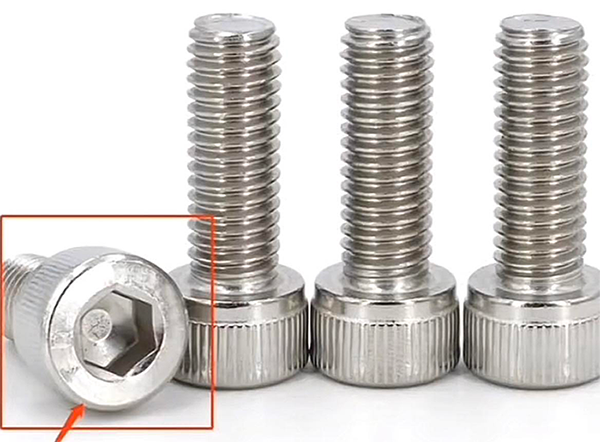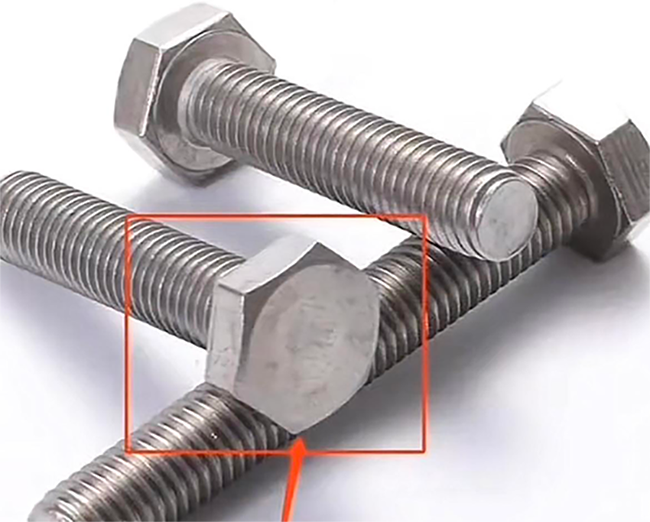In the world of fasteners, internal hexagon bolts and external hexagon bolts are two very common and widely used types, each with unique characteristics and advantages, suitable for different scenarios and needs.
1、 Hexagonal socket bolt
Internal hexagon bolt, also known as internal hexagon screw or internal hexagon screw, has an internal hexagon shaped head and a concave hexagon in the middle. This design brings many advantages.
Firstly, in terms of structural strength, hexagonal bolts have six load-bearing surfaces. Compared to straight and cross shaped screws, they can better withstand tightening forces, are more stable during the tightening process, and can withstand larger loads.
Secondly, in terms of installation, the head of the hexagonal bolt can be embedded inside the workpiece to maintain the flatness and aesthetics of the workpiece surface, especially suitable for occasions with high appearance requirements, such as delicate furniture assembly, internal structural connections of electronic products, etc. Moreover, the hexagonal wrench can be operated in a small space, which gives the installation of hexagonal bolts in narrow spaces or deep holes a unique advantage. Installation and maintenance are very convenient, and adjustment is also relatively easy.
Furthermore, from a safety perspective, due to the use of specialized wrenches for disassembling hexagonal bolts, it is not easy for ordinary people to disassemble them, which to some extent increases the safety of the product and prevents unauthorized disassembly.
However, hexagonal bolts are not perfect either. One of its drawbacks is that the hex wrench is relatively unique, unlike ordinary screwdrivers or wrenches, and may not be easily found in some temporary situations where tools are needed. In addition, during frequent disassembly and installation, the hexagonal hole may wear out, causing the wrench and bolt to no longer fit tightly, affecting the tightening effect.
Hexagonal socket bolts are classified into different grades based on the hardness, tensile strength, yield strength, etc. of the screw wire. Common grades include 4.8, 8.8, 10.9, 12.9, etc. The higher the level, the better its strength and performance, but the price is also relatively high. Different grades of hexagon socket bolts are usually required to correspond to different product materials. For example, for equipment that can withstand large vibrations or impact loads, high-strength grade hexagonal bolts are required to ensure the reliability of the connection.
2、 External hexagon bolt
External hexagon bolt, also known as hexagonal head screw, is often referred to as external hexagon screw or external hexagon screw. Its head is a convex hexagonal shape, which is its most prominent feature.
Hexagonal bolts have many advantages in use. Firstly, its installation is very convenient. With an external hexagonal head, it can be easily tightened or loosened using common tools such as open-end wrenches, ring wrenches, or adjustable wrenches, without the need for special tools. This allows it to be quickly installed and removed in various scenarios. Secondly, external hexagonal bolts are usually made of high-strength steel, which has strong tensile and compressive capabilities and can be suitable for applications that require high loads, such as building structures, large mechanical equipment, etc. Thirdly, compared with other bolts, the head of the external hexagonal bolt is more sturdy and durable, even in harsh environments such as heavy loads and vibrations, it can maintain good fastening ability and is not easy to loosen. Fourthly, the size and standardized manufacturing of the external hexagonal bolts comply with the standards of the International Organization for Standardization, and have high universality, which can be widely used in various equipment and application environments. In addition, high-quality stainless steel hexagon bolts also have high corrosion resistance and can maintain good performance in harsh environments and high humidity conditions, making them suitable for applications that require high corrosion resistance, such as chemical equipment and marine engineering.
However, the hexagonal bolts also have some shortcomings. Due to its protruding head on the surface of the workpiece, it may be limited and occupy relatively large space in some situations where space requirements are extremely strict. Moreover, in some cases of frequent vibration or impact, if the tightening force of the wrench is insufficient or the pre tightening force of the bolt is insufficient, the outer hexagonal bolt may gradually loosen and require regular inspection and tightening.
Hexagonal bolts also have different strength grades, such as 4.8 and 8.8, which are commonly used in the market. Among them, the hardness and screw torque of 8.8 grade external hexagon bolts perform better, and are widely used in situations where high safety, fastening, and stability requirements are placed on the product.
3、 Application scenarios of internal hexagon bolts and external hexagon bolts
Internal hexagonal bolts are widely used in furniture manufacturing, electronic equipment, precision instruments, and other fields due to their aesthetic appeal, small space occupation, and easy installation. For example, in the connection parts of some high-end furniture, using hexagonal bolts can maintain the flatness and smoothness of the furniture surface without affecting its appearance; Inside electronic devices, the narrow space makes hexagonal bolts an ideal choice, providing reliable fastening without taking up too much space.
Hexagonal bolts are widely used in the construction industry, mechanical equipment, automotive manufacturing, and other fields due to their advantages of easy installation, high strength, and good universality. On construction sites, a large number of steel structure connections use external hexagonal bolts; Hexagonal bolts are also commonly used fasteners in the assembly and maintenance of mechanical equipment; The connection of components such as the engine and chassis of a car also relies on external hexagonal bolts.
In summary, both internal hexagon bolts and external hexagon bolts have their own characteristics and advantages. In practical applications, it is necessary to choose the appropriate bolt type based on specific usage scenarios, requirements, and conditions to ensure the firmness, reliability, and safety of the connection. Both internal hexagon bolts and external hexagon bolts are essential components in modern industry and daily life, providing solid guarantees for the stable operation of various equipment and structures.
Post time: Aug-24-2024


